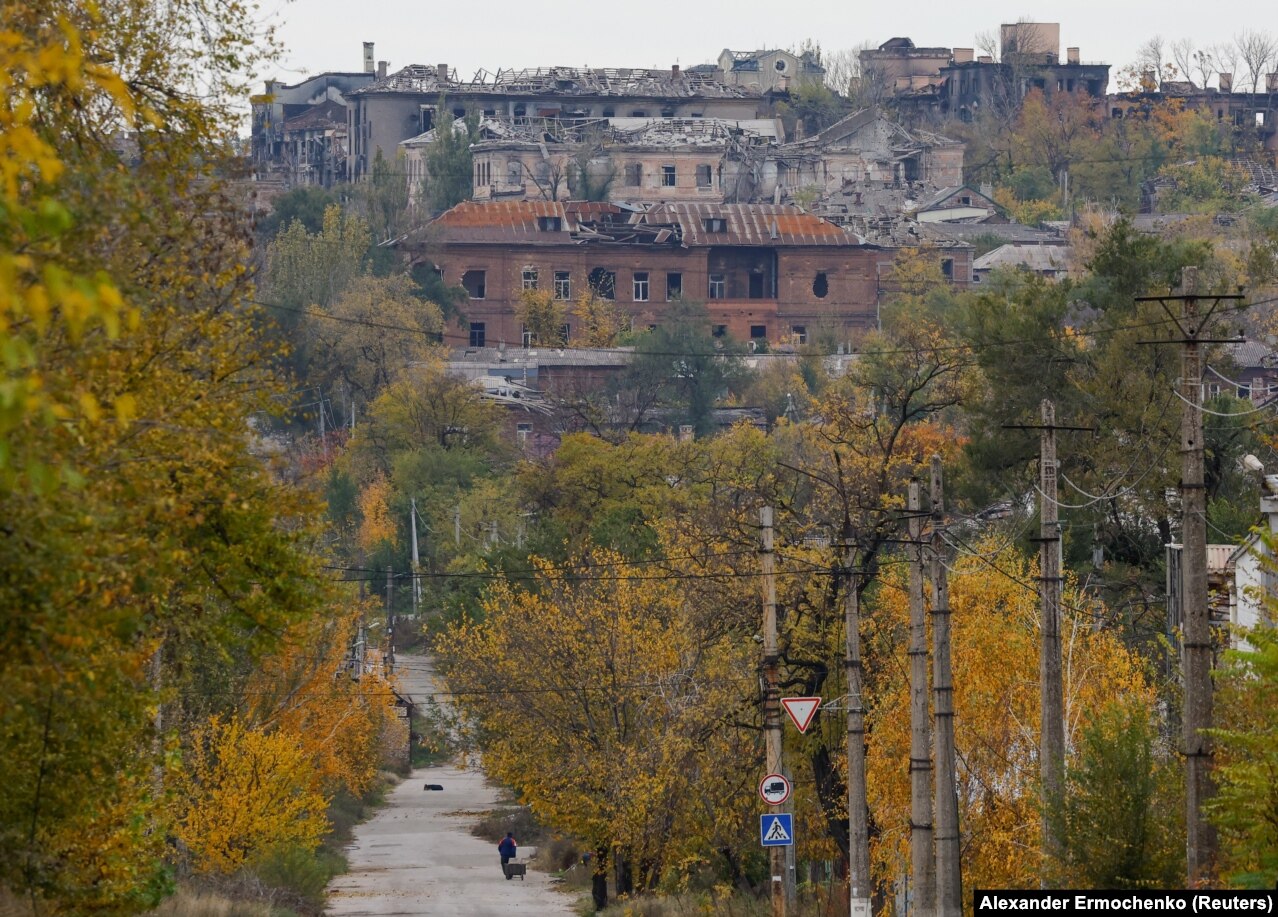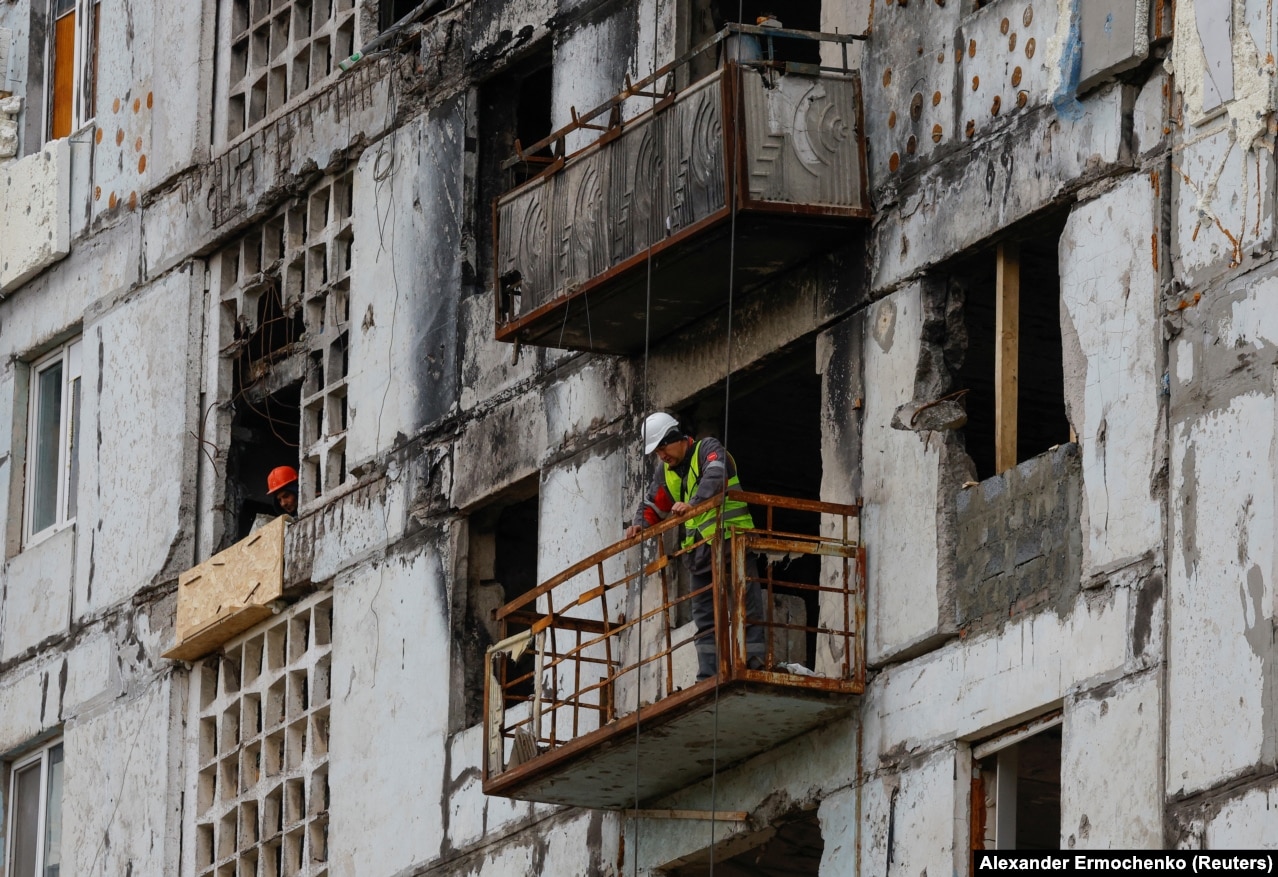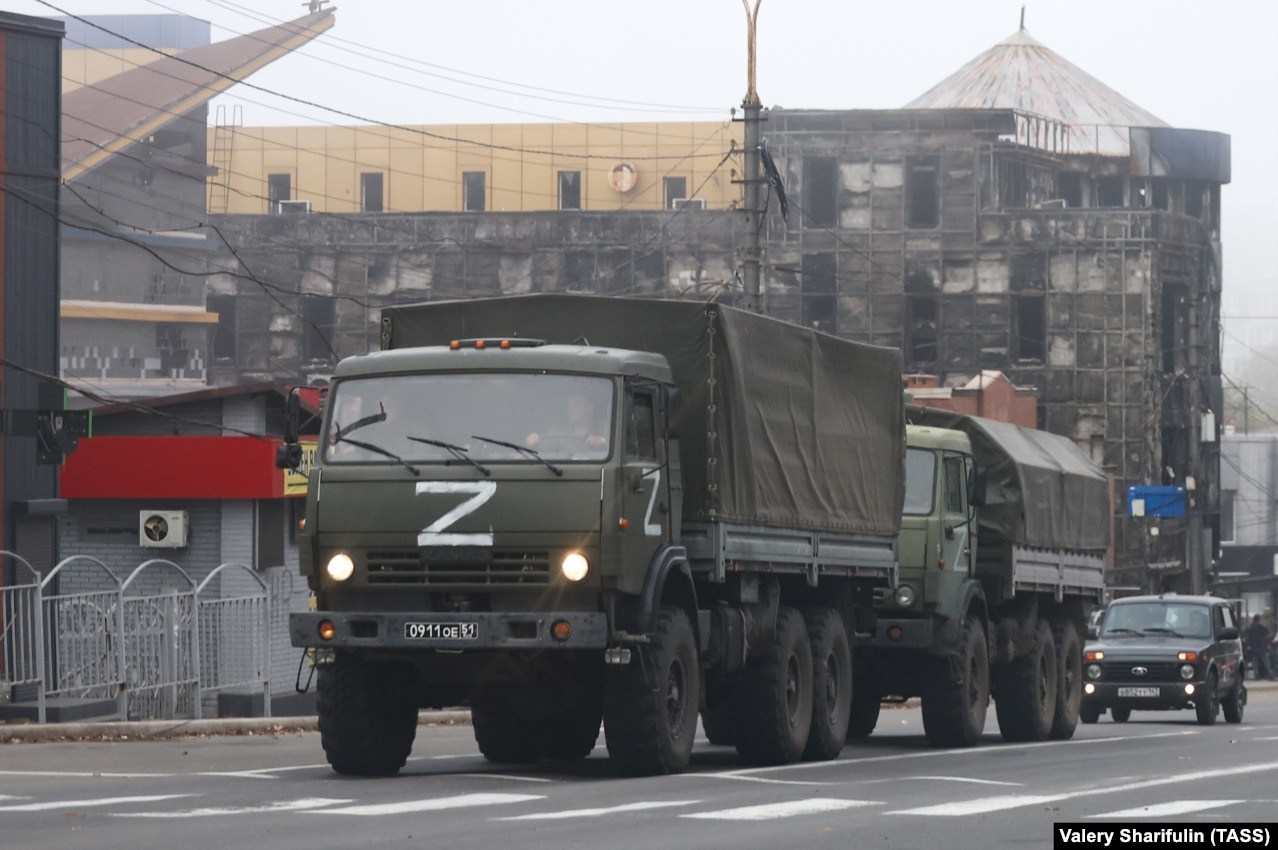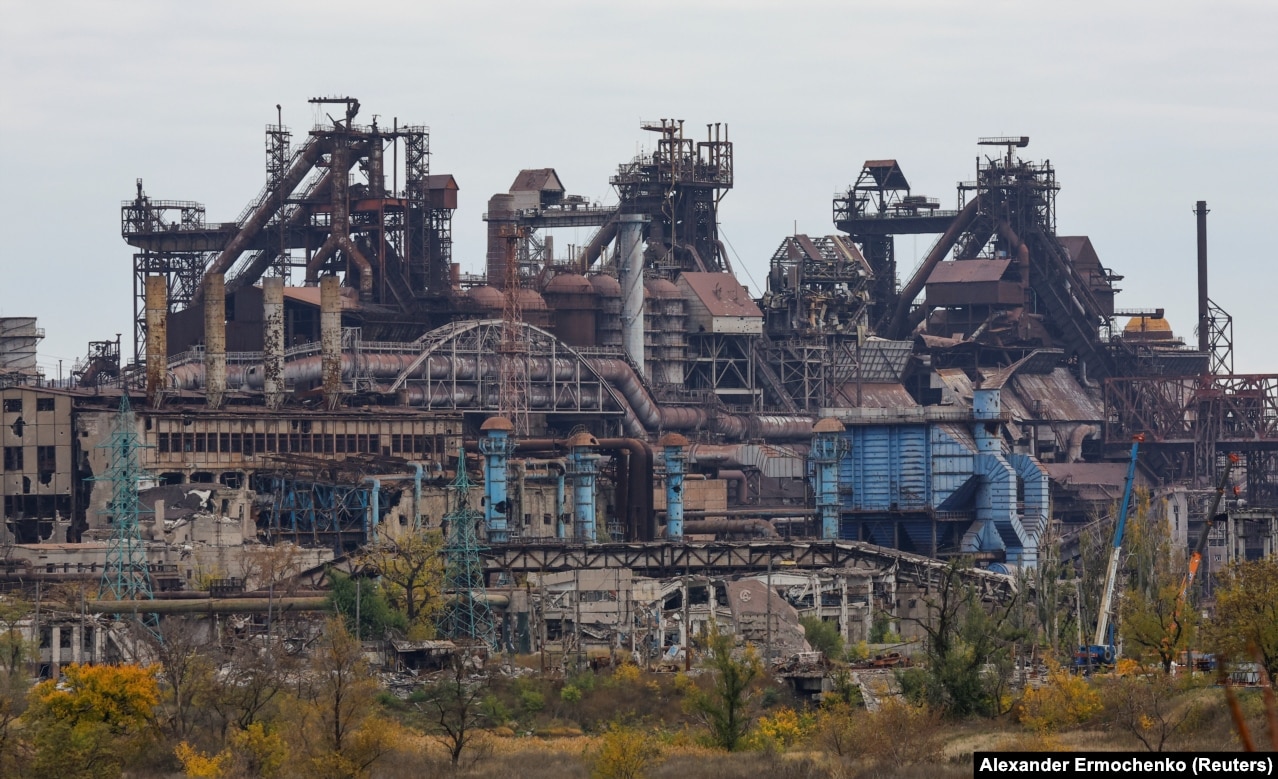An Urban Mausoleum
"It ]Mariupol] is horror. Wherever you look,whichever way you look. Everything is black, is destroyed.""Our lives have been taken from us. Our child was taken from us.""It's so ridiculous and stupid. How do you restore a dead city where people were killed at every turn?"Lydya Erashova, Mariupol, Ukraine"There is no discussion, people aren't prepared.""People still live in the basements. Where they can go is unclear."Mariupol activist"They spend an inordinate amount of time focusing on things like erasing demonstrations of Ukrainian identity and very little time tending to the needs of the Mariupol people.""It's really a very brutal, inhuman colonial experiment unfolding before our eyes."Michael Carpenter, U.S. ambassador to the Organization for Security and Cooperation in Europe
 |
| A man pulls a cart toward a destroyed suburb of Mariupol on October 29. |
Back
in November Russian President Vladimir Putin praised the heroism of
those he spoke of as Mariupol's 'defenders' -- aka the Russian military
that had laid siege to the city since February 24 -- as he awarded the
ruined city the title of "City of Military Glory". The actual defenders
of the Ukrainian city, now in Russian hands were needless to say,
Ukrainians themselves determined not to allow Russia to take ownership
of Mariupol.
But
back in 2014 when Vladimir Putin annexed the Crimean Peninsula as part
of Russia, he planned to advance to Donetsk's Mariupol on the Azov Sea
as a land bridge between Russia and Ukraine. The Ukrainian military
resisted Moscow's early siege of the city but months later the siege
concluded with orders from Kyiv for the city defenders -- laid up, along
with city dwellers at the Azovstal steel mill basement corridors -- to
retreat and the ruined city fell to the invaders.
Moscow
has ordered that Mariupol be scrubbed of all identification of its
historic role as an industrial city of Ukraine's Donbas region. Plans
for the destroyed iron works is to turn the site into an industrial
park. The famed Mariupol theatre which had become the major bomb shelter
of the city of close to a half-million residents which was destroyd
when airstrikes hit it and hundreds died, is to be restored. OnlyRussian
construction workers are permitted within its precincts.
 |
| Construction workers in a war-damaged apartment building. |
According
to Petro Andryushchenko, aide to Mariupole's exiled mayor, the reason
that Ukrainian labour is excluded, not permitted the enter the ruins, is
to ensure that only Russians are exposed to the sight of rotting
corpses hauled away with the construction debris. For Moscow has
undertaken a massive reconstruction of the city, to expunge its historic
Ukrainian heritage status and completely Russify it.
Mariupol
is now a garrison city with Russian soldiers, builders, administrators
replacing the tens of thousands of Ukrainians who died there, or fled
the Russian occupation. Ukrainian street names are converted to Soviet
names. The Avenue of Peace to be renamed Lenin Avenue. The signage
announcing the name of the city has been Russified, repainted with red,
white and blue of the Russian flag. All vestiges of Ukrainian heritage
obliterated.
The
schools that remain open now teach a Russian curriculum, telephone and
television networks are Russian, Ukrainian currency fading, and the city
time zone now reflects Moscow's. Russia plans to demolish 50,000 homes
in the city. The stench of death lingers over the city, fading out with
winter's onset. One resident, Lydya Erashova saw her five-year-old son
Artem and her seven-year-old niece Angelina die when a Russian shell hit
their home.
 |
| A photo taken on October 19 shows Russian military trucks in front of a heavily damaged building in the center of Mariupol. |
Her
family buried the children in makeshift graves in a backyard and fled
the city of death, returning in July to rebury the children. They
discovered their bodies had been dug up and brought to a warehouse.
Neither Lydya Erashova nor her sister-in-law were able to force
themselves into the warehouse to retrieve the bodies of their children.
The children's fathers chose tiny coffins to be placed side-by-side in a
single grave.
During
the months'-long siege the city was relentlessly targeted with
airstrikes and artillery, food and water cut off along with
communications. For 86 days of hardship and agony the city held itself
together. In the eventual May surrender Mariupol made its way into
history as a symbol of Ukrainian resistance. Over 500 buildings have now
been identified as awaiting demolition, each holding 180 apartments. In
many of them corpses still decompose.
 |
| A child's playground in the courtyard of a ruined apartment block on October 29. Mariupol was once home to around 431,000 people. Less than a quarter of that number are estimated to remain in the city today |
The
fate of one of those ruined buildings took place in mid-March when
Russian tanks rolled in. One tank raised its gun at a building on
Mytropolytska Streeet and fired shattering walls and windows,
obliterating apartments, and killing residents, though most by then were
huddled in the building basement. Russian soldiers set to work
dismantling Mariupol's memorial to the Holodomor, the Soviet famine that
killed millions of Ukrainians.
Two
murals commemorating victims of the 2014 attack on Ukraine were painted
over. Russia has formulated a plan for a new, Russian city, with a new
population. The Russian military forces will be replaced by Russian
citizens. Ukrainians who are content to live under Russian rule will be
permitted to live there as well. The thousands of Mariupol's residents
who were were sent to Russia may return, while those who fled to other
areas of Ukraine may not.
 |
| The heavily damaged Azovstal steel mill photographed on October 29. The historic Azovstal metalworks was the final holdout for members of Azov, a controversial Ukrainian regiment that previously used neo-Nazi imagery on its uniforms. |
Labels: Mariupol, Russian Invasion of Ukraine, Russian War Crimes

<< Home